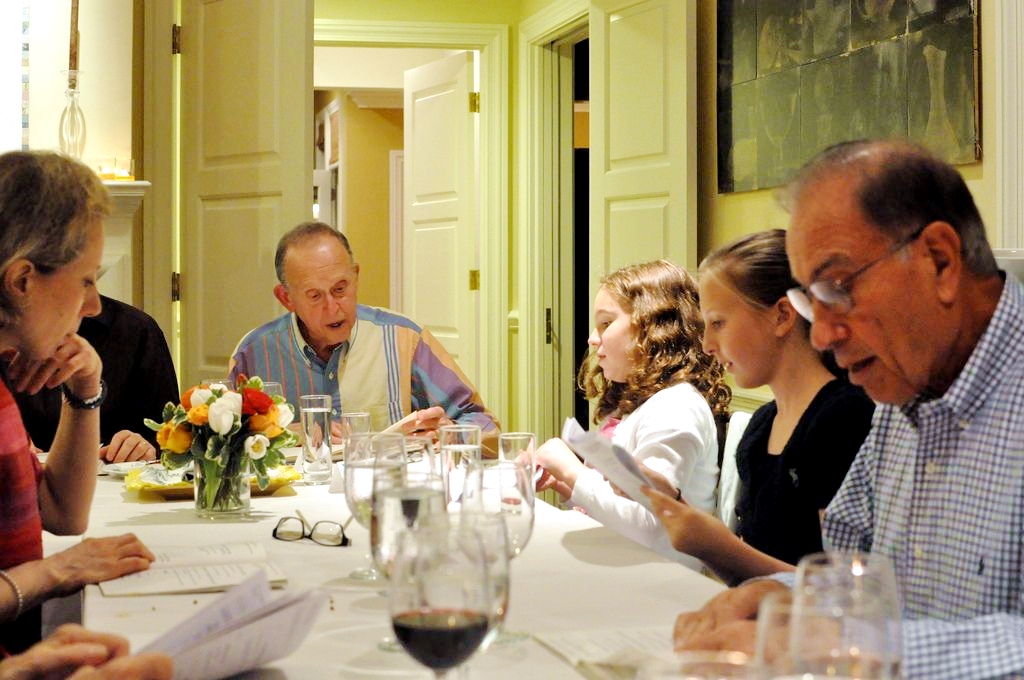KI TISA (When You Take)
Exodus 30:11–34:35; 1 Kings 18:1–39 (Ashk.); 1 Kings 18:20–39 (Seph.); Matthew 17:1–13: Parah Adumah: Numbers 19:1–22
“Then the Lord said to Moses, ‘When you take a census of the Israelites to count them, each one must pay the Lord a ransom for his life at the time he is counted. Then no plague will come on them when you number them.” (Exodus 30:11–12)
Our last two Torah studies, Terumah and Tetzaveh, have focused on the design of the wilderness Tabernacle, furnishings, and priestly garments. This Shabbat continues with God’s instructions to Moses on the mountain.
The Israelites are to create the Sanctuary’s water basin, anointing oil, and incense. God tells Moses that He has chosen a “wise-hearted” artisan named Bezalel, along with his associate Oholiab, to lead the sacred construction project.
“See, I have chosen Bezalel son of Uri, the son of Hur, of the tribe of Judah.” (Exodus 31:2)
In order to fund the building of the Sanctuary, God commands Moses to take a census of the people of Israel and to instruct them to give a half shekel of silver.
“This is what everyone who is numbered shall give: half a shekel … as a contribution to the LORD.” (Exodus 30:13)

A half-shekel coin from the First Jewish War (AD 66–70). Around the chalice it says, “Half Shekel,” and above it “Year 2.” The sprig of pomegranate side states, “Jerusalem is holy.” (Photo by Classical Numismatic Group)
Although the construction of the Sanctuary is an important and sacred task, God makes it clear that His commandment to rest on the Sabbath takes priority over this worthy goal.
We also may be working toward worthwhile achievements (and even those that are for the purpose of serving the Lord), but we must remember that God prefers us to put them on hold for a day in order to keep the Shabbat holy.
Resting and being refreshed on the seventh day Sabbath is a special sign of our covenant relationship with the Almighty God.
It is a testimony that He is the Creator. And just as He created the world in six days and rested on the seventh, so are we to work for six days and rest on the seventh.
“It will be a sign between Me and the Israelites forever, for in six days the LORD made the heavens and the earth, and on the seventh day He rested and was refreshed.’” (Exodus 31:17)

It is traditional to have two loaves of challah (braided egg bread) at the Shabbat meal on Friday night. These loaves are a commemoration of the double portion of manna that the Israelites received every Friday in honor of Shabbat.
Standing in the Gap
“And when the people saw that Moses delayed to come down from the mount, the people gathered themselves together unto Aaron, and said to him: ‘Come, make us a god who shall go before us; for as for this Moses, the man that brought us up out of the land of Egypt, we know not what is become of him.'” (Exodus 32:1)
While Moses is on Mount Sinai receiving God’s instruction, the people become impatient for his return and demand that Aaron make them a god they can see.
Aaron gives in to the pressure and fashions a golden calf, proclaiming the idol as their god: “This is your god, O Israel, who brought you up from the land of Egypt.” (Exodus 32:4)
When God sees the people worshiping a golden calf, He threatens to destroy the nation of Israel and to start all over again with Moses.
“‘I have seen these people,’ the Lord said to Moses, ‘and they are a stiff-necked people. Now leave Me alone so that My anger may burn against them and that I may destroy them. Then I will make you into a great nation.’” (Exodus 32:9–10)
Instead of accepting God’s offer to make him the beginning of a great nation, Moses stands in the gap and intercedes on behalf of the people of Israel.
We see in this Parasha that even though Moses prays for the people, he is so angry when he comes down from the mountain and witnesses their idolatry that he smashes the tablets of testimony that God had engraved with His own hand.
Moses then destroys the Golden Calf and the primary instigators to this idolatry are put to death.
Although God relents from destroying Israel entirely, their sin is not without consequences—3,000 men fall under the sword of judgment that day. Amazingly enough, on Shavuot (Pentecost), which commemorates the giving of the Torah, God poured out His Ruach (Spirit) in Jerusalem soon after the resurrection of Yeshua (Jesus) and the exact same number were saved!
“So then, those who had received his word were baptized; and that day there were added about three thousand souls.” (Acts 2:41)
His pouring out of God’s Ruach underscores the fact that Yeshua did not come to condemn us but to save us. There is hope for us yet. We have been given the Spirit of God to bring us into life, not death, by leading and guiding us into all truth.
God Gives Second Chances
Like the Israelites, some of us might go through periods of our lives where we descend into sin or fall away from the Lord, but God promises the hope of restoration and renewal if we will agree to come back into His presence in repentance to find forgiveness.
This, perhaps, is represented by God calling Moses to come back up the mountain to receive a second set of tablets, even though Moses destroyed the first set in a rage.
“Now the Lord said to Moses, ‘Cut out for yourself two stone tablets like the former ones, and I will write on the tablets the words that were on the former tablets which you shattered.’” (Exodus 34:1)
God is so good! He passed in front of Moses proclaiming to him His Divine character:
“The Lord, the Lord God, compassionate and gracious, slow to anger, and abounding in lovingkindness [chesed / covenant loyalty] and truth; who keeps lovingkindness [chesed] for thousands, who forgives iniquity, transgression and sin.” (Exodus 34:6–7)
The more we become conformed and transformed into the image and likeness of God, in whose image we have been created, the more we will demonstrate these wonderful qualities of His chesed love, mercy, grace, patience, long-suffering, goodness, and truth.
We will become less judgmental and more merciful; we will criticize less and intercede more.
Oh, how we long to be changed—to be more like Him. Coming into covenant with God is not about just following the rules; it is about having a deep, abiding, intimate relationship with a loving God.

A Jewish man with his tallit (prayer shawl) draped over his head stands before an open Torah ark at the Western (Wailing) Wall.
Battle for the Eternal Covenant with Israel
Today, there is a portion of the Christian Church that believes in the doctrine of replacement theology, a fallacious teaching that contends God is no longer in covenant with the Jewish People—that He has disowned them and has replaced them with the Church.
Those who believe they are now God’s new Israel display an arrogance that starkly contrasts Moses’ humility—a man who could have replaced Israel but, instead, prayed for their survival.
The apostle Paul warned the church against the conceit of non-Jews in the family tree of God: “Do not be arrogant toward the branches; but if you are arrogant, remember that it is not you who supports the root, but the root supports you.” (Romans 11:18)
Rather than replacing the tree, Gentile Believers are grafted in as branches to an ancient tree whose root is still Jewish. It is quite impossible that God has substituted another people for His Chosen because He has promised that He will never forsake or abandon His people Israel:
“For the Lord will not abandon His people, nor will He forsake His inheritance.” (Psalm 94:14)
Shabbat Parah: the Sabbath of the Red Heifer
“Then the LORD spoke to Moses and Aaron, saying, ‘This is the statute of the law which the LORD has commanded, saying, “Speak to the sons of Israel that they bring you an unblemished red heifer [parah adumah] in which is no defect and on which a yoke has never been placed. You shall give it to Eleazar the priest, and it shall be brought outside the camp and be slaughtered in his presence.”’” (Numbers 19:1–3)
In preparation for Passover, a special portion of Scripture from Numbers 19:1–22 is added today.
It describes the sacrifice of the Parah Adumah (Red Heifer).
This Sabbath, therefore, is called Shabbat Parah (Sabbath of the Red Heifer). Shabbat Parah always occurs on the Sabbath after Purim and begins the formal preparations of the Passover (which falls Nissan 15–22 on the Jewish calendar, which is April 10–April 18 this year).
The Red Heifer sacrifice is an essential part of the Temple services.
Through it, the Jewish priests (kohanim) and the Jewish People purify themselves before the festival of Passover. The Red Heifer brings about the ritual purity (tahor) necessary for sacrificing the Paschal lamb.
Anyone who had been defiled through contact with the dead and had not been cleansed with the sprinkling of the waters of purification containing the ashes of the Red Heifer would be disqualified from celebrating the Passover and cut off from the community of Israel:
“But the man who is unclean and does not purify himself from uncleanness, that person shall be cut off from the midst of the assembly, because he has defiled the sanctuary of the LORD; the water for impurity has not been sprinkled on him, he is unclean.” (Numbers 19:20)
One of the great enigmas of this ceremony is that while these waters of purification make the defiled person clean, the one performing the ritual becomes unclean until evening.
We can understand this irony by comparing it to cleaning a dirty house—the house becomes clean, but the once clean rag or sponge becomes dirty as, perhaps, the person doing the cleaning does as well.

In the above photo, metal vessels are being prepared for Passover through a 30-second koshering procedure called hagalah (purging).
The rabbis consider the ritual of the sacrificial Red Heifer to be one of Judaism’s greatest mysteries; even so, the Brit Chadashah (New Testament) gives us great insight into it.
The book of Hebrews refers to this special ritual when explaining how we are cleansed (not just outwardly but to the depth of our inner being) through the blood of Yeshua the Messiah.
“The blood of goats and bulls and the ashes of a heifer sprinkled on those who are ceremonially unclean sanctify them so that they are outwardly clean. How much more, then, will the blood of the Messiah, who through the eternal Spirit offered Himself unblemished to God, cleanse our consciences from acts that lead to death, so that we may serve the Living God!” (Hebrews 9:13–14)
The Messiah, who was totally clean and pure of all sin, took our sins and impurities upon Himself so that we may become the righteousness of God in Him. (2 Corinthians 5:21)
Though our sins may have made our souls look like scarlet, they will become white as snow, as the Hebrew Prophet Isaiah prophesied thousands of years ago:
“‘Come now, let us settle the matter,’ says the LORD. ‘Though your sins are like scarlet, they shall be as white as snow; though they are red as crimson, they shall be like










